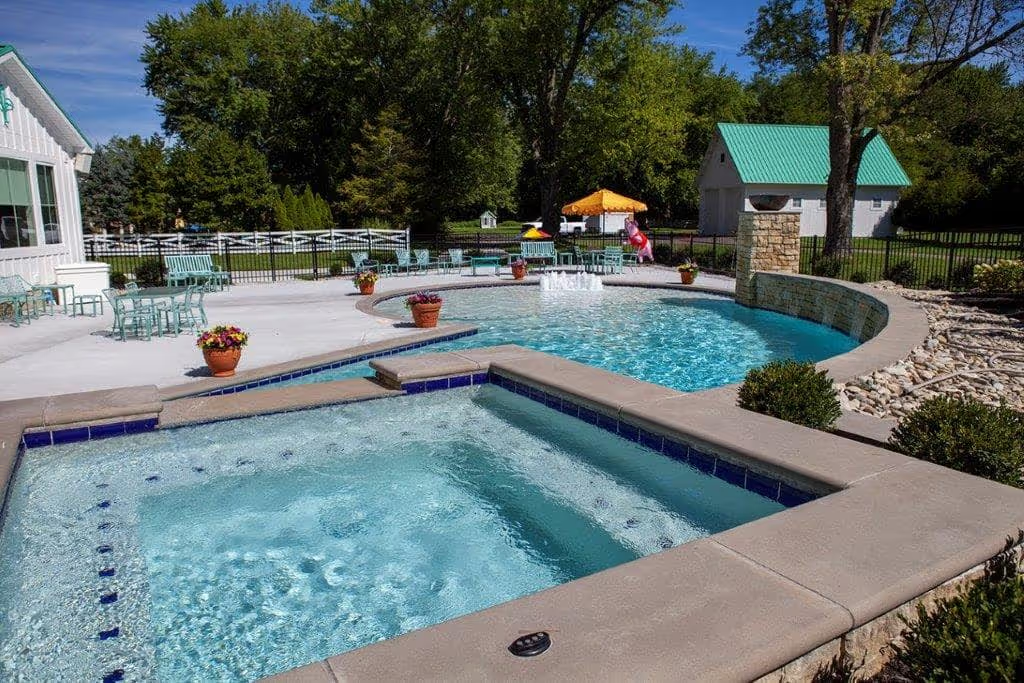- Stone Center
- Blog
Painting a Stone Fireplace: Transform Your Space in 5 Steps
3/9/2025
8/25/2025
Painting a Stone Fireplace: Transform Your Space in 5 Steps
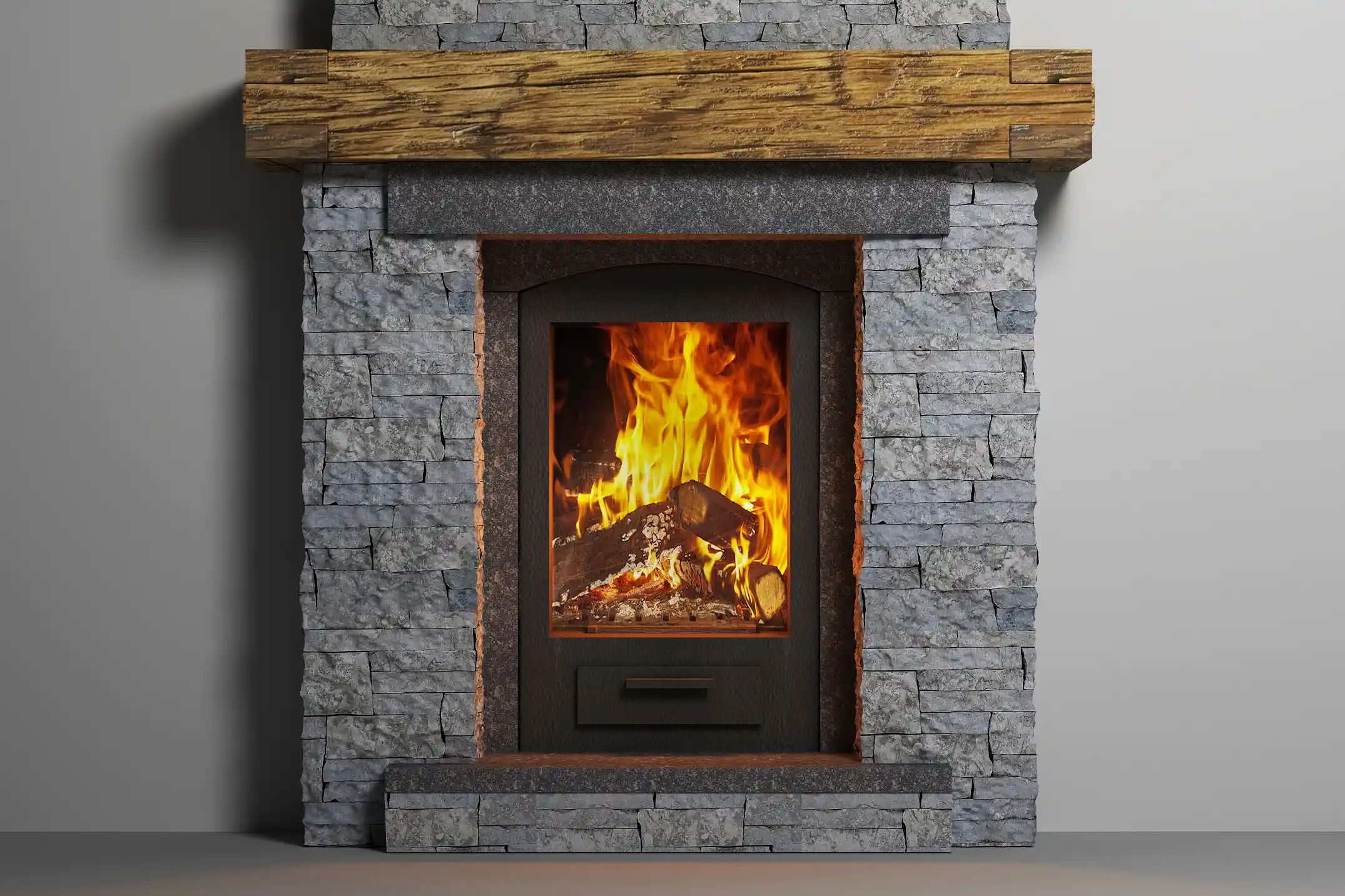
Does your natural stone fireplace feel outdated and overwhelming in your house? Many homeowners find themselves staring at dark, imposing stone fireplaces that seem to swallow light rather than create warmth. Whether you're dealing with limestone fireplace surrounds, stone veneer installations, other traditional stone surfaces, or even looking to match a painted brick aesthetic, painting offers an incredible transformation opportunity.
In this step-by-step guide, you’ll learn everything from how to select the right masonry paint to achieving that perfect final coat. We'll tackle common challenges like paint adhesion in humid conditions and share techniques that deliver a professional touch to your stone fireplace makeover.
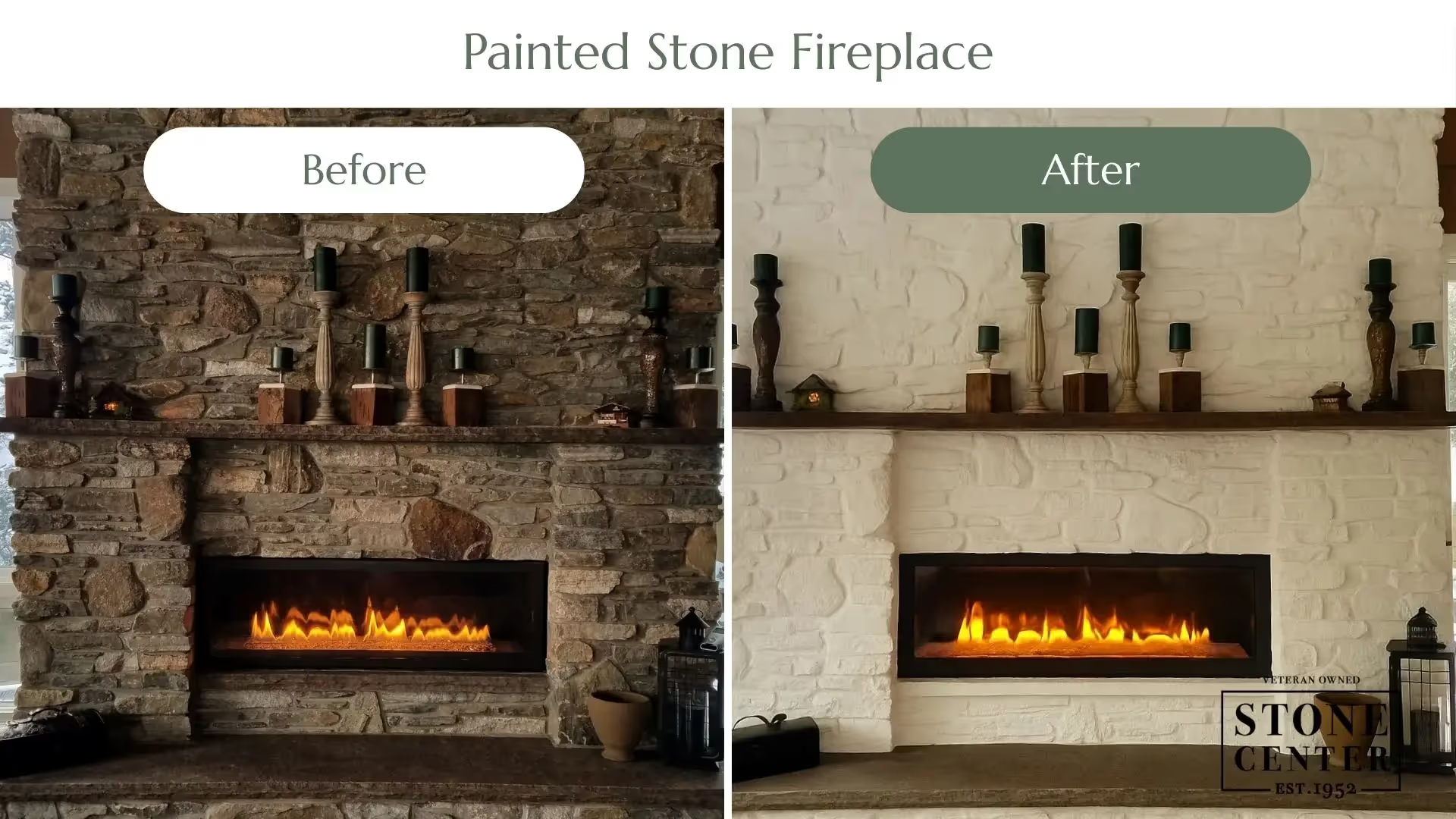
Why Paint Your Stone Fireplace?
Updating a stone fireplace doesn’t always require a complete remodel. Sometimes, a fresh coat of paint is all it takes to give your room a brand-new personality.
- Modernization without replacement: Update your outdated stone fireplace while preserving its natural texture and character.
- Brightening dark spaces: Transform heavy, dark stones into light-reflecting surfaces that open up your whole room.
- Style flexibility: Whether you want classic white washed looks or bold accent colors, paint gives complete creative control.
- Cost-effective impact: Achieve dramatic results for under $100 in materials versus thousands for replacement.
A painted stone fireplace becomes the room's focal point, reflecting your personal style while maintaining the authentic texture that makes stone so appealing.
Choosing the Right Paint for Stone Fireplaces
Success starts with proper materials. Not all paints work on stone surfaces, especially in Ohio's varying humidity conditions.
Start with a high-quality bonding primer designed for masonry surfaces. These specialized formulations penetrate porous stone and create superior adhesion compared to standard primers.
🌡️ Heat considerations: For functional fireplaces, use high-temperature paint near the firebox. Never apply regular paint inside the actual firebox.
Essential Tools and Materials
Before beginning your stone fireplace painting project, gather these materials.
Cleaning supplies:
- Wire brush or stiff scrub brush
- Drop cloths and plastic sheeting
- Vacuum or shop vac
- Clean rags or paper towels
- Mild detergent or stone cleaner
Painting equipment:
- High-quality synthetic bristle brushes (a 2-3 inch angled brush works well)
- Small detail brushes for tight spaces
- Paint roller with thick nap sleeve (or a paint sprayer for a faster application on larger areas)
- Paint tray
- Painter's tape
- Extension pole (if needed for height)
⚠️ Safety tip: Always wear protective glasses, dust masks, and work gloves. Ensure adequate ventilation throughout the process.
How to Paint a Stone Fireplace: Step-by-Step Process
Follow these proven steps for professional-quality results. Each phase builds on the previous work, so don't rush the process.
Step 1: Deep Cleaning
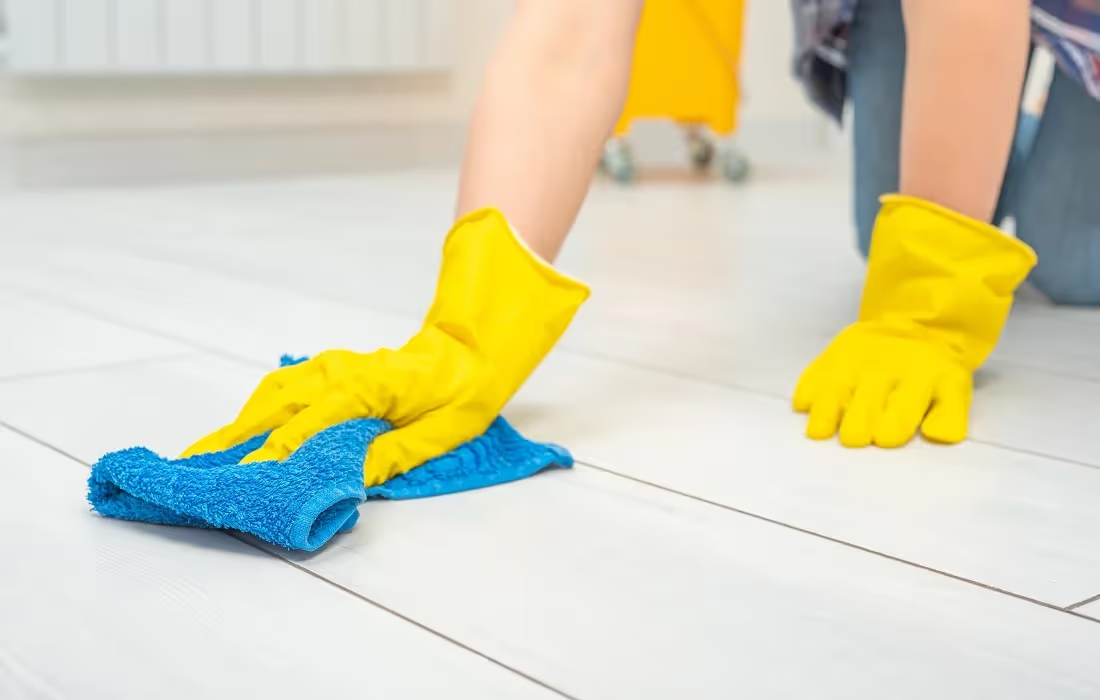
Remove all dust, dirt, and loose material from every surface. Use your wire brush to scrub away moss, white mineral deposits, and loose mortar. Pay special attention to grooves and crevices where debris accumulates.
For stubborn stains, mix equal parts white vinegar and water. Apply this solution to problem areas, let it sit for several minutes, then scrub with your wire brush. When cleaning limestone fireplace surfaces, use gentler pressure to avoid damage. Rinse thoroughly and allow 24-48 hours drying time.
Step 2: Surface Assessment and Protection
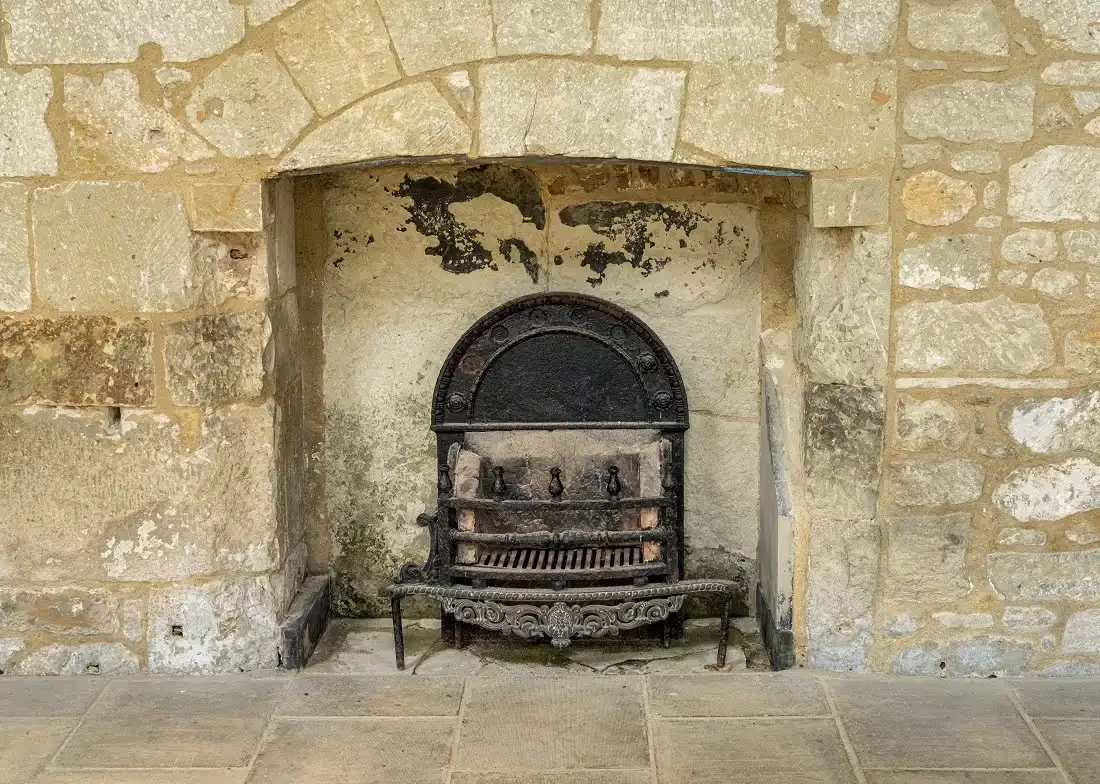
Examine your stone fireplace carefully for cracks, gaps, or damaged mortar. Use paintable masonry caulk to fill significant gaps between stones.
Cover your floor with plastic sheeting or drop cloths, extending the coverage well beyond the fireplace area. Use painter's tape to protect the hearth, adjacent walls, mantel, and any fixtures you don't want painted. Take time with this step — good masking prevents hours of cleanup later.
Step 3: Primer Application
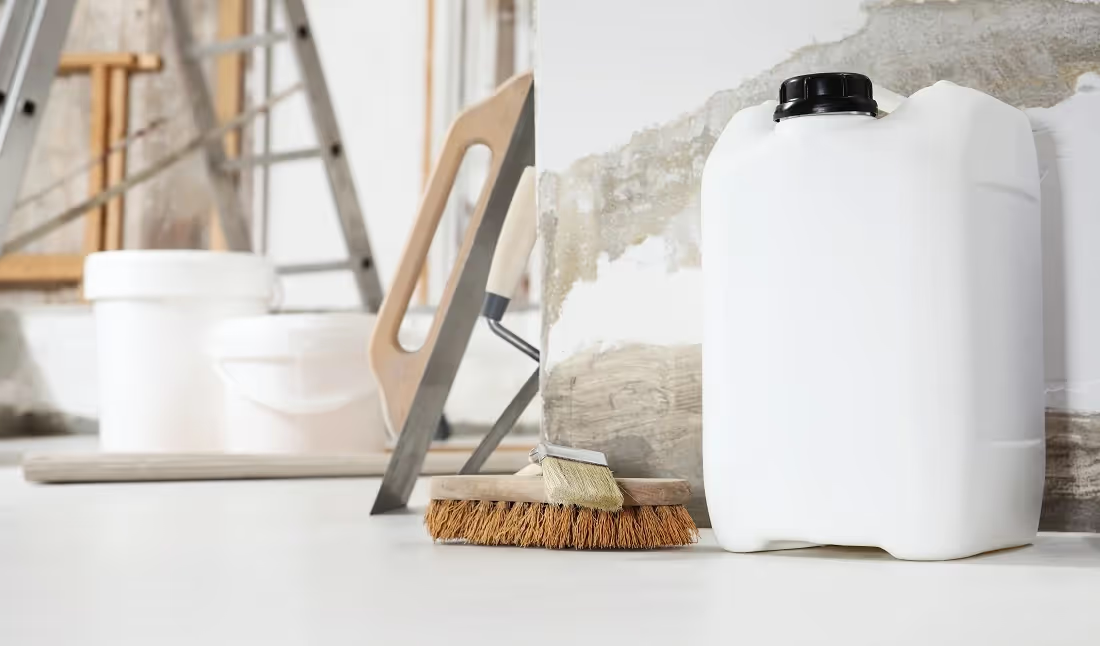
Use a high-quality bonding primer designed for masonry surfaces. Work in small sections, using a brush to reach all nooks and crannies in your fireplace stone.
Natural stone and stone veneer texture create numerous crevices that rollers can't reach. Use a dabbing motion to work primer into these areas. For larger, smoother sections, follow up with a thick-nap roller, but always finish with brush work.
Allow primer to dry completely per manufacturer specifications (typically 2-4 hours in normal conditions, longer in humid weather).
👉 Pro tip: Tint your primer to match your final color — this reduces the number of paint coats needed.
Step 4: Paint Application
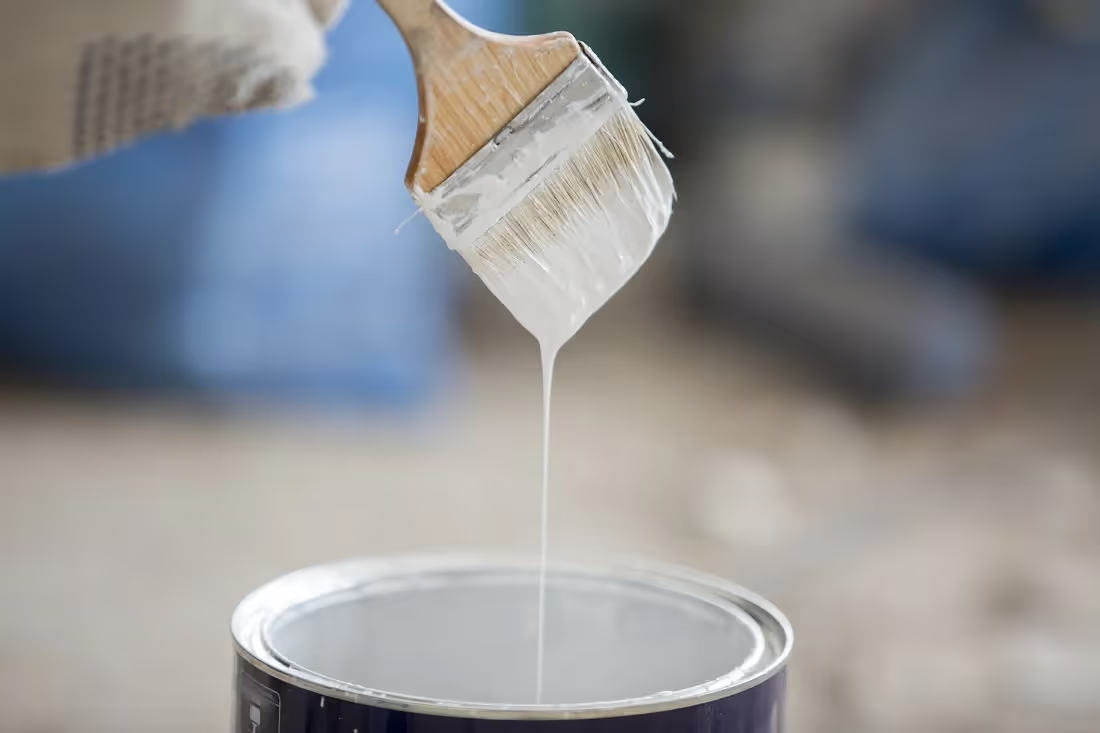
Now for the fun part: apply your first coat using the same brush-first approach as primer. Work systematically across the surface, maintaining wet edges to prevent lap marks. Focus on preserving the natural texture that gives stone its character. Avoid over-brushing, which creates streaks or removes paint from recessed areas.
After your first coat dries (2-4 hours), assess coverage. Stone's porous nature often requires a second coat for a uniform appearance. Don't worry if the first coat looks patchy — this is normal.
Apply your second coat using the same careful technique. This typically provides the uniform coverage and color depth you're seeking.
Step 5: Detail Work and Touch-Ups

Remove painter's tape while the final coat is slightly damp to prevent peeling. Use a small brush for edge imperfections or areas where tape didn't provide perfect protection. If your natural stone fireplace had a particularly deep texture, consider subtle highlighting that emphasizes these features while maintaining the painted finish.
Examine your painted stone fireplace in different lighting conditions. Touch up missed spots or thin areas with a small brush, paying attention to corners and edges.
Special Techniques for Enhanced Results
Creative stone fireplace designs often incorporate special techniques that add visual interest and maintain the natural character of stone.
Creating Depth and Interest
Painted stone fireplaces don't have to look flat. These techniques help maintain visual appeal:
- Dry brushing: After base coats dry completely, lightly drag a nearly dry brush with a different shade across the surface. This highlights texture and creates subtle color variation.
- Whitewashing effect: Mix paint with glazing medium or water for a semi-transparent finish. This allows the original stone color to show through while providing lightening effects.
- Adding sparkle: Apply mineral sparkle to wet paint to restore natural stone gleam. Use this technique selectively — less is more.
Working with Different Stone Types
Different stone surfaces require adjusted techniques for optimal results.
- Smooth stone: May require less primer and paint, but focus on achieving uniform coverage without brush marks.
- Rough or highly textured stone: Requires careful attention to ensure paint reaches all surfaces. Use stippling motions to work paint into every crevice.
- Mixed stone types: Adjust your technique accordingly. Larger stones might accept roller application, while smaller, irregular stones need brush work.
Explore stunning fireplace transformations created using our premium stone materials. These projects showcase various techniques possible with quality natural stone:
#gallery_start



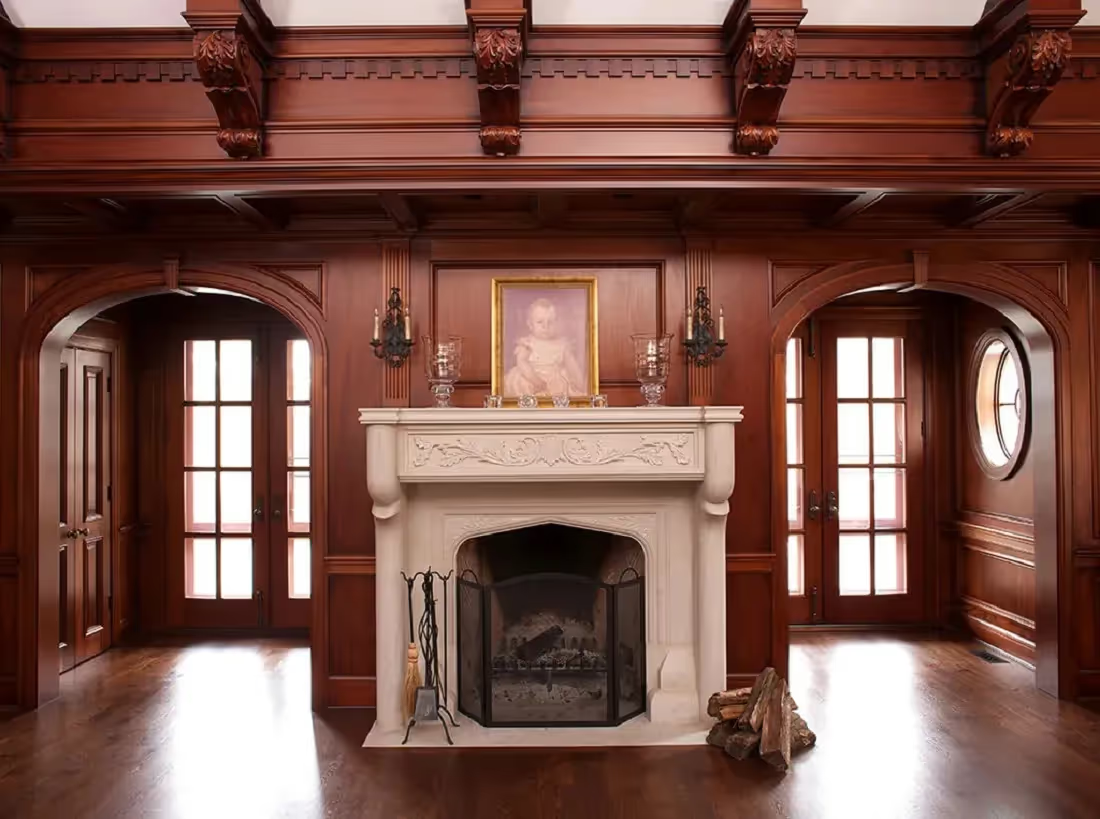
#gallery_end
Avoiding Common Mistakes
Learning from others' experiences can save you time and frustration. Here are the most common pitfalls in stone fireplace painting:
These common pitfalls can ruin an otherwise successful project. Proper preparation and material selection make the difference between amateur and professional results.
Keeping Your Painted Fireplace Beautiful: Maintenance Tips
A well-maintained painted stone fireplace can look stunning for years with minimal effort.
Regular maintenance keeps your investment looking fresh:
- Regular dusting: Use a soft brush or vacuum attachment weekly to remove dust buildup.
- Gentle cleaning: Clean with mild soap and water as needed, avoiding harsh chemicals.
- Touch-up strategy: Keep leftover paint for small chips or worn areas before they spread.
- Seasonal checks: Monitor for changes during humid seasons and address issues promptly.
Proper care extends the life of your paint job and keeps your fireplace looking like a professional installation.
When to Consider Professional Help
While painting a stone fireplace is a great DIY project, it makes sense to call for professional assistance in certain situations:
- Structural issues: If your fireplace has significant cracks, loose stones, or damaged mortar, address these issues professionally before painting.
- Height concerns: Fireplaces extending high up a wall might require specialized equipment or expertise for safe completion.
- Time constraints: Professional painters can complete this project more quickly if you're working within a tight timeline.
- Complex finishes: Specialized techniques like faux finishing or complex color schemes might benefit from professional expertise.
Sometimes the best investment is a completely new fireplace surround. When considering a stone fireplace cost versus painting, factor in long-term satisfaction and home value. A new installation might provide better return on investment than repeated painting projects.
Transform Your Space with Confidence
Painting your stone fireplace offers an affordable way to modernize your space while preserving character. The key lies in thorough preparation, quality materials, and patient application of proven techniques.
At Stone Center, we help homeowners and contractors across Ohio bring their fireplace ideas to life with quality stone veneer, limestone fireplace surrounds, and premium natural stone options. We supply the materials you need to update your fireplace with confidence. Contact us today to explore your options!
FAQ
FAQs
How do I get paint to stick to stone?
Use a high-quality bonding primer specifically designed for masonry surfaces. Clean the stone thoroughly first, removing all dust and debris. The primer creates a foundation for proper paint adhesion.
Should painted stone be sealed after painting?
Most quality masonry paints don't require additional sealing. However, high-traffic areas or exterior applications may benefit from a clear protective coating designed for painted surfaces.
Can you reverse a painted stone fireplace?
Yes, but it requires effort. Paint stripping chemicals or sandblasting can remove paint, though this process may damage softer stones. Test removal methods in inconspicuous areas first.
.avif)
Jon, the owner of Stone Center, is a knowledgeable expert in natural stone products, specializing in various types of stone for landscaping and architectural projects. Passionate about promoting the beauty and versatility of natural stone, Jon aims to use these blogs to inspire readers with creative ideas to upgrade their homes.
How much does it cost to get a stone restored?
How much you end up spending to restore stone varies on the type of stone, the technique, and the stone’s current condition. Stone in good condition will cost less to restore, whereas stone that has a lot of wear and tear may require a longer restoration.





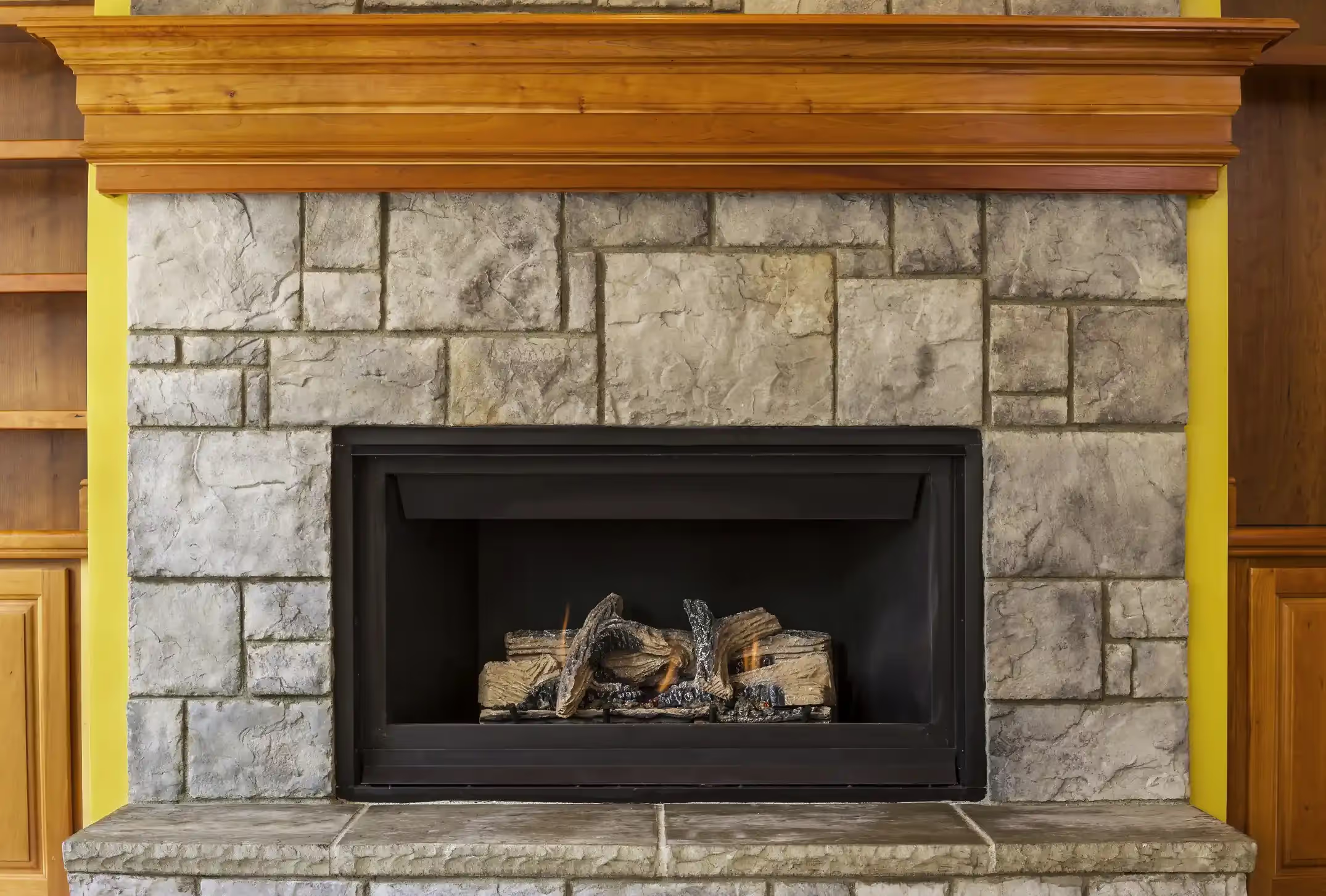
.jpg)
